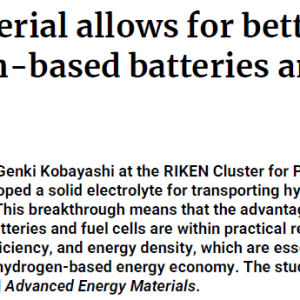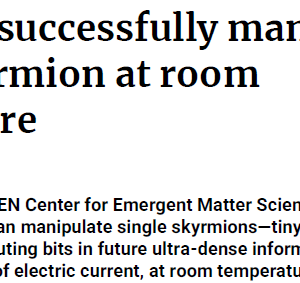
Nanostructure control transforms hydrophilic surfaces into superhydrophobic surfaces Nanopins with a diameter of 6 nm create superhydrophobic surfaces
₩4,000
By controlling the microstructure of a solid surface, it is possible to make the surface water-repellent. The degree of waterrepellency
is determined by the contact angle of a water droplet on the solid surface.
The apparent contact angle can be increased by having a surface with a contact angle of 180°.
Although the membrane has been created using water-repellent molecules, it is expected that even if hydrophilic molecules
are used, it will exhibit super-water-repellency if the surface microstructure is controlled and the proportion of air is increased.
In this study, a surface structure consisting of nanopins of about 6 nm in size was created, and the air layer was increased,
Using hydrophilic molecules, they created a superwater-repellent film (with a contact angle of 178°).
Super-hydrophobic surface (contact angle : 178 degrees) has been fabricated from hydrophilic material through a nanostructure
control technique. Nanometer-sized pins, which align perpendicular to surface, were grown from Co aqueous
solution, and the pins were coated with lauric acid, subsequently. The surface with the pins
of 6.5nm diameter showed super-hidrophobicity even the pins were hydrophilic.





상품평
아직 상품평이 없습니다.